
Geomatik
Scope & Guideline
Exploring the frontiers of geospatial innovation.
Introduction
Aims and Scopes
- Geographic Information Systems (GIS):
The journal extensively covers applications and advancements in GIS, including spatial data analysis, multi-criteria decision-making, and GIS-based modeling for various sectors such as urban planning, environmental management, and disaster risk assessment. - Remote Sensing Technologies:
Research in this area includes the use of satellite imagery, aerial photography, and other remote sensing techniques to analyze land use, environmental changes, and natural resource management. - 3D Modeling and Visualization:
The journal promotes studies that involve 3D modeling, particularly in cultural heritage documentation, urban planning, and landscape visualization using technologies such as UAVs and LiDAR. - Machine Learning and Data Science Applications:
Emerging methodologies incorporating machine learning and data science techniques for analyzing geospatial data, enhancing predictive models, and improving data processing in geospatial contexts are a significant focus. - Sustainable Development and Environmental Assessment:
There is a consistent emphasis on research that addresses sustainability challenges, including assessments of environmental impacts, land use changes, and resource management strategies.
Trending and Emerging
- Smart Cities and Big Data Analytics:
Research focusing on the application of geospatial data analytics in smart city initiatives is on the rise, emphasizing urban planning, infrastructure development, and real-time data management. - Climate Change Impact Studies:
There is an increasing trend towards studies that analyze the impacts of climate change on various geographic regions, utilizing advanced modeling and remote sensing techniques. - Integration of AI and Machine Learning in GIS:
The incorporation of artificial intelligence and machine learning into GIS applications is gaining momentum, enhancing capabilities in predictive analytics and data processing. - Cultural Heritage Documentation and Preservation:
Emerging topics include innovative methods for documenting and preserving cultural heritage using advanced technologies such as LiDAR and UAVs, reflecting a growing interest in this area. - Environmental Risk Assessment and Management:
The journal is experiencing a surge in research focused on assessing and managing environmental risks, particularly related to natural disasters, utilizing GIS and remote sensing methodologies.
Declining or Waning
- Traditional Geodesy:
Papers focusing solely on traditional geodesy methods have decreased, likely due to the growing reliance on modern technologies such as GNSS and remote sensing for spatial data acquisition. - Basic Land Surveying Techniques:
The journal has seen fewer contributions centered around fundamental land surveying techniques, as the field evolves towards more technology-driven and integrated approaches. - Historical Cartography and Mapping:
Research specifically related to historical cartography appears to be waning, possibly due to a shift towards more contemporary applications of GIS and spatial analysis. - Conventional Environmental Monitoring:
Studies utilizing conventional methods for environmental monitoring have declined, as more sophisticated and efficient remote sensing technologies gain prominence. - Simple Statistical Analyses:
There is a noticeable reduction in publications that rely solely on basic statistical analyses in geospatial studies, reflecting a trend towards more complex and computationally intensive methodologies.
Similar Journals
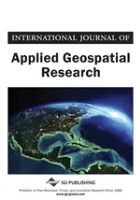
International Journal of Applied Geospatial Research
Fostering excellence in applied geospatial studies.International Journal of Applied Geospatial Research is an esteemed publication dedicated to advancing the field of geospatial research. Published by IGI Global, this journal provides a platform for innovative studies from 2010 to 2024 that encourage multidisciplinary contributions across Earth and planetary sciences and geography. While currently not offering open access, the journal's focus on applied research ensures that it remains highly relevant to both academics and industry professionals alike. With an ISSN of 1947-9654 and an E-ISSN of 1947-9662, it has been indexed in various databases, reflecting its emerging significance with rankings such as Q4 in Earth and Planetary Sciences and Geography according to Scopus, placing it at the intersection of critical research and practical application. Researchers, professionals, and students can expect insightful articles that enhance understanding and drive innovation in geospatial applications essential for informed decision-making in a rapidly changing world.
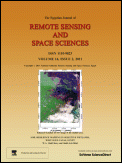
Egyptian Journal of Remote Sensing and Space Sciences
Fostering Global Collaboration in Earth and Space StudiesThe Egyptian Journal of Remote Sensing and Space Sciences, published by Elsevier, is a premier open-access journal dedicated to advancing the fields of Remote Sensing and Space Sciences. Since its inception, the journal has gained a prominent reputation, currently holding a prestigious Q1 ranking in Earth and Planetary Sciences and placing within the top 10% of its field according to Scopus metrics. With an ISSN of 1110-9823 and an E-ISSN of 2090-2476, the journal features a diverse range of scholarly articles that explore both theoretical and practical aspects of remote sensing technologies and space science innovations, thus appealing to researchers, professionals, and students alike. Established in 2003 and fully transitioning to an open-access model in 2010, the journal aims to disseminate knowledge and foster collaboration across the globe by providing wider accessibility to groundbreaking research findings. Its commitment to quality and innovation is a catalyst for intellectual development in these dynamic and evolving disciplines.
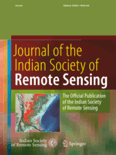
Journal of the Indian Society of Remote Sensing
Illuminating the Path of Remote Sensing ResearchJournal of the Indian Society of Remote Sensing, published by SPRINGER, stands as a prominent contribution to the fields of Earth and Planetary Sciences and Geography, Planning and Development. With an ISSN of 0255-660X and an E-ISSN of 0974-3006, this esteemed journal has been in circulation since 1973, showcasing a rich repository of research and advancements in remote sensing applications, methodologies, and technologies, specifically within the Indian context and beyond. The journal's impact is underscored by its placement in the Q2 category of both Earth and Planetary Sciences and Geography as of 2023, ranking impressively in the Scopus database with significant percentiles. With the intent to bridge the gap between theory and practical application, it invites scholars, researchers, and professionals to contribute innovative studies that enhance our understanding of remote sensing and its implications in various domains. The Journal of the Indian Society of Remote Sensing is a vital resource for anyone looking to remain at the forefront of research in this dynamic field.

International Journal of Spatial Data Infrastructures Research
Driving Progress in Geographic Information SystemsThe International Journal of Spatial Data Infrastructures Research is a prestigious, open-access publication dedicated to advancing knowledge in the field of spatial data infrastructures. Published by the European Commission, Joint Research Centre, this journal has been a vital resource since its inception in 2006, promoting innovative research that informs policy and practice in geographic information systems and spatial data management. With a robust commitment to open access, the journal ensures that critical findings are readily available to researchers, professionals, and students globally, fostering a collaborative environment for the development of spatial technologies. The journal's unique focus on spatial data infrastructures makes it an essential platform for sharing empirical studies, theoretical advancements, and practical applications, ultimately driving the evolution of smart, sustainable geospatial solutions.
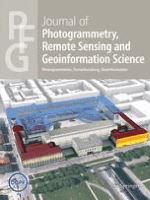
PFG-Journal of Photogrammetry Remote Sensing and Geoinformation Science
Advancing Knowledge in Photogrammetry and Remote SensingPFG-Journal of Photogrammetry Remote Sensing and Geoinformation Science, published by Springer International Publishing AG, stands as a prestigious peer-reviewed journal at the intersection of cutting-edge technology and the vital disciplines of Earth and Planetary Sciences, Geography, and Instrumentation. With an impressive impact factor and ranking within the Q1 category, this journal regularly publishes innovative research, methodologies, and case studies that drive advancements in the field. As of its converged years from 2017 to 2024, the journal focuses on the latest trends in photogrammetry, remote sensing, and geoinformation science, providing a crucial platform for researchers, professionals, and students alike. Its open access model ensures that findings are widely accessible, fostering collaboration and knowledge dissemination throughout the global scientific community. Located in Switzerland, geographical and technological diversity is embraced, making the PFG Journal an essential resource for those dedicated to exploring the complexities of our planet and contributing to sustainable development.

International Journal of Applied Earth Observation and Geoinformation
Navigating the Future of Geoinformation and Sustainability.International Journal of Applied Earth Observation and Geoinformation is a premier peer-reviewed journal published by Elsevier, focusing on the integration and application of earth observation and geoinformation technologies across diverse fields. With an open access model established in 2020, this journal enhances accessibility and dissemination of research crucial for addressing global challenges related to climate change, resource management, and sustainable development. The journal occupies a notable position within the academic community, featuring a Q1 ranking in multiple categories including Computers in Earth Sciences, Earth-Surface Processes, and Global and Planetary Change, reflecting its significant impact and relevance in these disciplines. It is recognized for its high-quality articles that explore innovative methodologies and applications, making it an essential resource for researchers, practitioners, and students alike who seek to advance their understanding of earth dynamics and geospatial technology. The journal is indexed in Scopus with impressive rankings that underscore its high citation impact and scholarly influence, with an emphasis on providing a platform for the latest findings in management, monitoring, and policy in environmental science.

GEOINFORMATICA
Exploring the Intersection of Geography and Information SystemsGEOINFORMATICA is a leading journal in the field of geoinformatics, widely recognized for its contributions to both Geography, Planning and Development as well as Information Systems. Published by Springer, this journal holds a distinguished Q1 ranking in Geography and a Q2 ranking in Information Systems as of 2023, reflecting its high-impact research contributions and authoritative voice in these disciplines. Since its inception in 1997, GEOINFORMATICA has provided a platform for innovative research, methodologies, and applications related to geographic information science, spatial data analysis, and remote sensing technologies. The journal's rigorous peer-review process and strategic positioning within the academic landscape allow it to attract a diverse array of publications, assisting researchers, professionals, and students in understanding complex spatial phenomena. While the journal does not offer Open Access, it remains a vital resource located in the Netherlands, and its indexed status has secured impressive Scopus rankings—#131 in Geography, Planning and Development, and #134 in Information Systems, showcasing its robust scholarly influence. Explore the latest developments and cutting-edge research through GEOINFORMATICA, where scholarly excellence converges with real-world relevance.
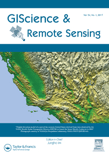
GIScience & Remote Sensing
Pioneering Insights in Earth and Planetary SciencesGIScience & Remote Sensing, published by Taylor & Francis Ltd, stands as a leading journal in the realm of Earth and Planetary Sciences, holding a prestigious Q1 ranking. Since its transition to Open Access in 2022, the journal has significantly broadened its reach, enabling researchers, professionals, and students across the globe to disseminate and access cutting-edge research related to geographic information science and remote sensing technologies. With a focus on publishing high-quality, peer-reviewed articles that contribute to the understanding of the Earth’s processes, environments, and interactions, this journal not only supports advancements in scientific knowledge but also fosters interdisciplinary collaboration. Based in the United Kingdom, GIScience & Remote Sensing continues to pave the way for innovative methodologies and applications, solidifying its vital role within the scientific community.
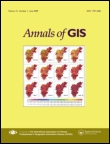
Annals of GIS
Exploring the Frontiers of Spatial ScienceWelcome to the Annals of GIS, a leading academic journal published by Taylor & Francis Ltd, dedicated to advancing the field of Geographic Information Science and its applications. With an ISSN of 1947-5683 and an E-ISSN of 1947-5691, this Open Access journal has been ensuring wide accessibility since 2019, thereby bolstering the dissemination of knowledge in areas such as remote sensing, spatial analysis, and geoinformatics. Hailing from the United Kingdom, the journal ranks impressively within its categories, achieving a Q2 status in Computer Science Applications and a prestigious Q1 ranking in Earth and Planetary Sciences for 2023, placing it in the top 10% among its peers. With a focus on innovative research spanning from 2009 to 2024, the Annals of GIS serves as a vital platform for researchers, professionals, and students alike, providing insights and fostering discussions that push the boundaries of geographic technologies and their real-world applications.

Reports on Geodesy and Geoinformatics
Advancing knowledge in geodesy and geoinformatics.Reports on Geodesy and Geoinformatics, an esteemed scholarly journal published by SCIENDO, stands as a vital platform in the field of geodesy, geoinformatics, and related sciences. With an ISSN of 2391-8365 and E-ISSN 2391-8152, this open-access journal has been providing free access to impactful research and advancements in the domain since 2013. Located in Warsaw, Poland, at Bogumila Zuga 32A, Mazovia 01-811, it aims to disseminate high-quality research articles, case studies, and reviews that are crucial for academics, industry professionals, and students alike. The journal's commitment to promoting innovative methodologies and technological advancements reinforces its position as an important resource for fostering collaboration and knowledge sharing across global communities in geodesy and geoinformatics.